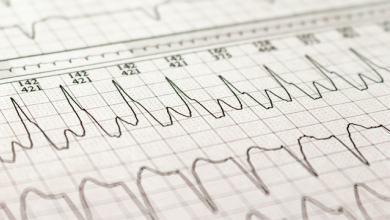Search results
Author(s):
Mathieu Lebloa
,
Patrizio Pascale
Added:
1 year ago
Author(s):
Rajdip Dulai
,
Fatima Bangash
,
Ajay Sharma
,
et al
Added:
4 months ago
Author(s):
Eduardo Back Sternick
,
Mariana Faustino
,
Frederico Soares Correa
,
et al
Added:
3 years ago
Radiofrequency (RF) catheter ablation is currently the treatment of choice in patients with accessory pathways (APs) and Wolff– Parkinson–White syndrome, and is shown to have a success rate >95 %.1 APs usually have endocardial ventricular and atrial insertions, located close to the atrioventricular valve rings, making most endocardial catheter ablation procedures relatively straightforward and…
View more
Author(s):
Mario Njeim
,
Frank Bogun
Added:
3 years ago
Percutaneous ablation for ventricular tachycardia (VT) was first attempted in 1983 and has rapidly evolved to become an important option for controlling recurrent VTs.1 Endocardial ablation remained the only percutaneous approach until epicardial access was introduced by Sosa et al. in 1996 and thereafter became progressively more available as an adjunctive strategy for the treatment of…
View more
Author(s):
Demosthenes G Katritsis
,
Josep Brugada
Added:
3 years ago
The term narrow QRS tachycardia indicates individuals with a QRS duration ≤120 ms, while wide QRS tachycardia refers to tachycardia with a QRS duration >120 ms.1 Narrow QRS complexes are due to rapid activation of the ventricles via the His–Purkinje system, suggesting that the origin of the arrhythmia is above or within the His bundle. However, early activation of the His bundle can also occur…
View more
Conduction System Pacing
Author(s):
Ahran D Arnold
,
Zachary I Whinnett
,
Pugazhendhi Vijayaraman
Added:
3 years ago
Article
Mahaim Revisited
Author(s):
Eduardo Back Sternick
,
Damián Sánchez-Quintana
,
Hein J Wellens
,
et al
Added:
1 year ago
Article
Author(s):
Ramanan Kumareswaran
,
Francis E Marchlinski
Added:
3 years ago
Ventricular tachycardia (VT) is one of the most challenging medical conditions faced by cardiac patients and physicians treating them. Antiarrhythmic medications have limited effectiveness and are frequently poorly tolerated.1–4 Catheter ablation is increasingly used to treat patients successfully.1,5–7 Most VTs can be ablated endocardially but some require epicardial mapping and ablation…
View more
Wide Complex Tachycardia
Author(s):
John B Garner
,
John M Miller
Added:
3 years ago
Article
Body Surface Electrocardiographic Mapping for Non-invasive Identification of Arrhythmic Sources
Author(s):
Ashok J Shah
,
Meleze Hocini
,
Patrizio Pascale
,
et al
Added:
3 years ago
Article
















